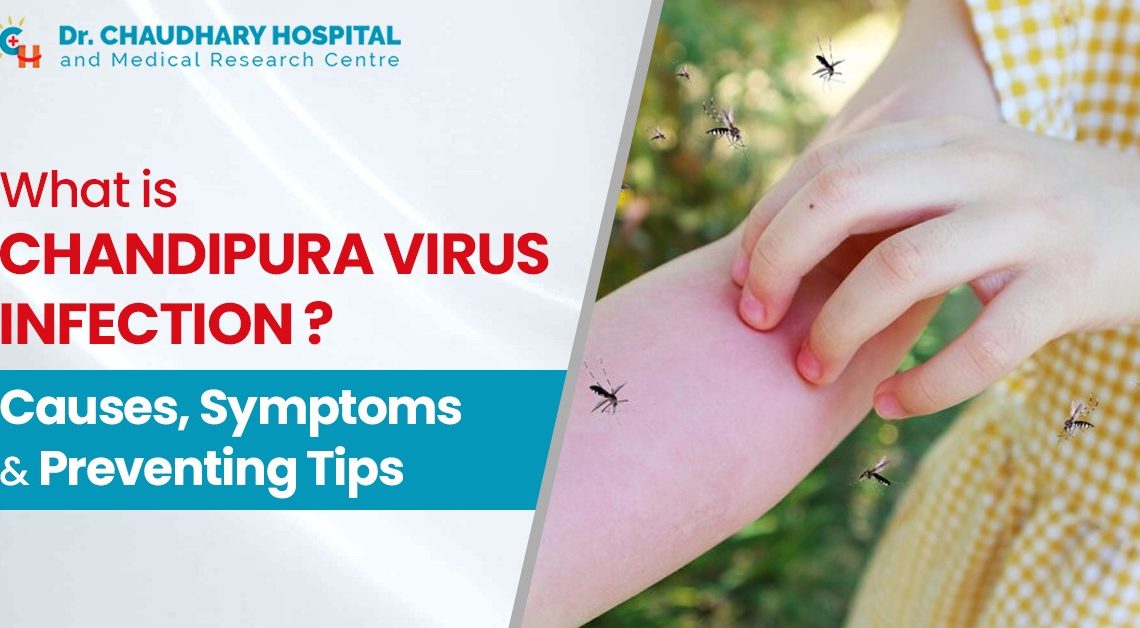On July 17, 2024 the National Institute of Virology (NIV) in Pune confirmed that a four-year-old girl in Gujarat died from the Chandipura virus. Gujarat has reported a total of 133 cases of viral encephalitis over the past month, including 47 detected to be Chandipura virus, according to a statement from the State government. Of the 15 deaths, 13 are from Gujarat, with one each from neighboring states of Madhya Pradesh and Rajasthan.
Gujarat Health Commissioner Harshad Patel stated that nearly all the affected patients are children. Local health authorities are actively monitoring encephalitis cases and will continue to closely observe infections in the general population, increasing surveillance in areas with reported cases.
This is not the first outbreak of the Chandipura virus in India; previous outbreaks in 2003-04 in central India, including Maharashtra, Gujarat, and Andhra Pradesh, resulted in the deaths of over 300 children. But what exactly is Chandipura Virus Infection? Let’s delve deeper to understand this deadly disease that seems to mostly affect children.
What is Chandipura Virus?
Chandipura Virus belongs to the Vesiculovirus genus within the Rhabdoviridae family, which also includes the rabies virus. It was first isolated in 1965 from the blood of two adults with a febrile illness in a village near Nagpur, Maharashtra, and the virus was named after this village. Another notable instance of the virus being found in humans occurred in 1980 in Madhya Pradesh, from a patient suffering from acute encephalitis.
What are the Symptoms of Chandipura Virus?
The clinical presentation of Chandipura virus infection is both acute and severe, with a short incubation period of 24 to 48 hours. The disease is contracted suddenly, marked by high fever, altered sensorium, and seizures. These symptoms can quickly progress to an encephalitic syndrome, potentially leading to coma and death if not treated promptly.
These symptoms occur due to the inflammation of the brain (encephalitis). Note the symptoms listed below:
- Rapid onset of fever
- Followed by vomiting
- Altered sensorium (a change in consciousness)
- Convulsions, diarrhea
- Neurological deficit (like the inability to speak, loss of balance, vision changes)
- Meningeal irritation (signs may include headaches, neck stiffness, photophobia and seizures)
How does the Chandipura Virus Infection Spread?
The virus is spread through the bites of sandflies, ticks, and mosquitoes. Sandflies are the primary carriers and can thrive in the cracks of walls or areas of homes made of sand or mud. Though the virus is not contagious and does not spread from person to person.
Does the Chandipura Virus mostly affect Children?
The Chandipura virus primarily affects children under the age of 15, with a significant impact in rural areas. During the 2003 outbreak in Andhra Pradesh, affected children ranged from 9 months to 14 years old, with most fatalities occurring within 48 hours of hospital admission. In the current Chandipura Virus outbreak in Gujarat, India, all reported deaths have been among children.
How is Chandipura Virus treated?
Currently, there is no specific antiviral treatment or vaccine for Chandipura virus. Early diagnosis and prompt treatment are crucial. Management primarily involves supportive care, including IV fluids, anticonvulsants, and fever control. In some cases, mechanical ventilation may be necessary. Without medical intervention, the infection can be fatal within 24-48 hours of symptom onset. However, with advancements in medical care, the fatality rate has significantly decreased from 60-70% to less than 25%.
How Can We Reduce the Risk of Chandipura Virus Infection?
To minimize the risk of contracting the Chandipura Virus, consider spraying insecticides, encouraging children to wear long-sleeve clothing, using bed nets while sleeping, and maintaining a clean and hygienic environment. These measures can significantly reduce the chances of infection from this dangerous virus.


